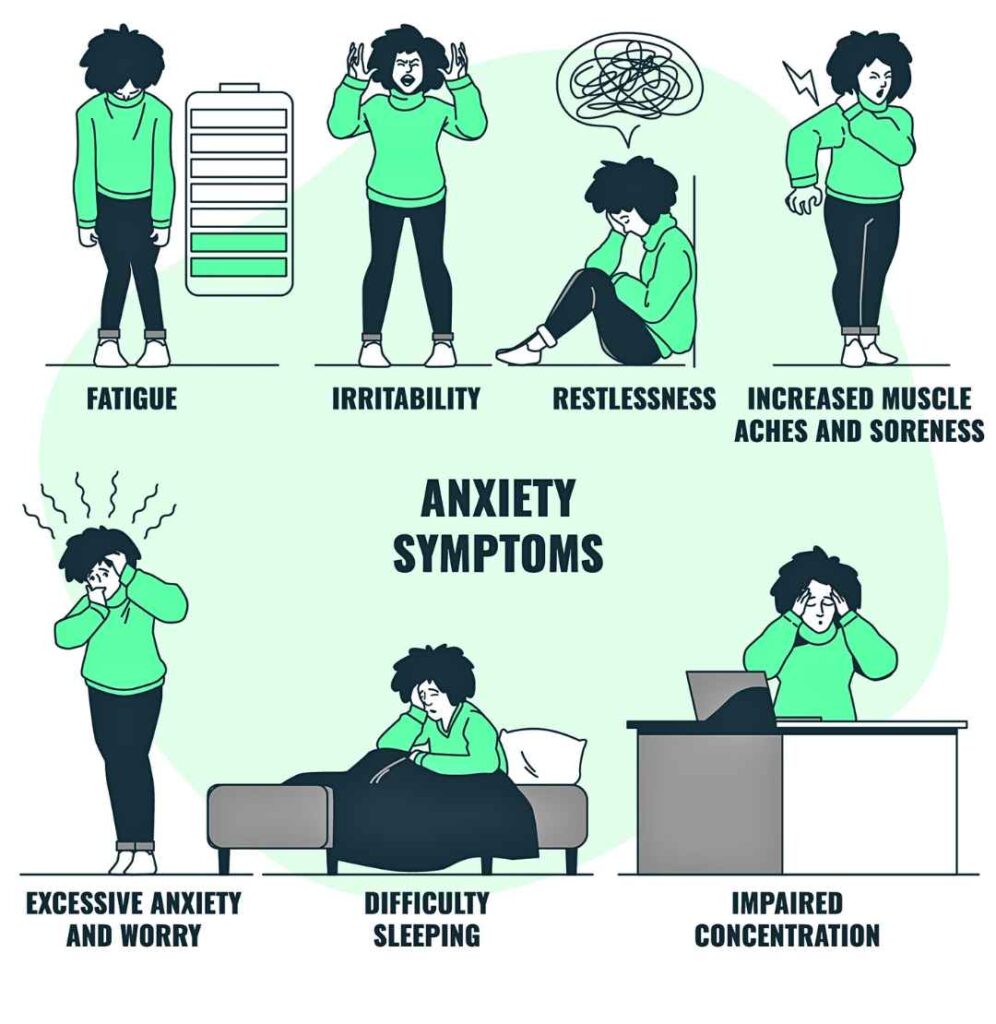Image by pressfoto on Freepik
Anxiety is a complex and prevalent aspect of human existence. It manifests in various forms, impacting our daily lives and overall well-being. In this comprehensive exploration, we delve into three distinct facets of Anxiety: High-Functioning Anxiety, Sleep Anxiety, and the Neuroscience and Physiology behind Fear and Anxiety. Understanding these dimensions can empower individuals to recognize and address Anxiety-related challenges effectively.
High-Functioning Anxiety: Unseen Struggles
High-Functioning Anxiety often hides in plain sight, with individuals adept at concealing their inner turmoil. This form of Anxiety is characterized by persistent Anxiety Symptoms coupled with a determination to confront rather than avoid them. Here are six subtle signs that may indicate High-Functioning Anxiety:
- Physical Manifestations: The coexistence of physical symptoms such as an accelerated heart rate with mental Anxiety.
- Fear of Disappointing Others: Constantly worrying about disappointing or angering others, driven by a fear of negative perceptions.
- Difficulty Relaxing: An inability to unwind, caused by overthinking and Anxiety about the future.
- Worst-Case Scenario Planning: An obsession with anticipating and preparing for the worst possible outcomes.
- Expecting the Worst: A tendency to expect negative outcomes, even in benign situations.
- Decision-Making Struggles: A persistent fear of making the wrong choices, leading to decision-making challenges.
High-Functioning Anxiety can be insidious, affecting personal and professional life. Acknowledging these signs is the first step toward managing it effectively.

Sleep Anxiety: When Rest Eludes Us
Sleep Anxiety revolves around an individual’s worry or fear associated with falling or staying asleep. It is distinct from generalized Anxiety disorder, focusing specifically on sleep-related concerns. Symptoms of sleep Anxiety may include:
- Difficulty Winding Down: Struggling to relax at night due to racing thoughts and Anxiety.
- Physical Symptoms: Experiencing physical manifestations of Anxiety, such as rapid heartbeat or sweating.
- A Sense of Dread: Feeling uneasy or fearful about the act of sleeping itself.
- Muscle Tension and Digestive Problems: Physical tension, particularly around the jaw, and digestive issues.
- Poor Concentration, Low Energy: Impaired cognitive function, low energy levels, and motivation.
- Irritability: Heightened irritability during waking hours.
Sleep Anxiety can disrupt sleep patterns, leading to a cycle of insomnia. It often stems from the association of bedtime with Anxiety and the fear of sleep itself. Factors like underlying medical conditions, lifestyle, and sleep hygiene can contribute to its development.
Physiology and Neuroscience of Fear and Anxiety
To comprehend Anxiety fully, we must delve into its Neuroscientific and Physiological roots. The brain’s amygdala, a small almond-shaped structure, takes center stage in processing emotional stimuli related to perceived threats. When confronted with danger, the amygdala triggers the body’s “fight or flight” response. This response includes increased heart rate, elevated blood pressure, and rapid shallow breathing.
The prefrontal cortex, another crucial brain region, regulates and controls fear and Anxiety. It assesses the threat’s severity and guides an appropriate response. Dysfunctions in the prefrontal cortex can impair the regulation of fear and Anxiety, contributing to Anxiety disorders.
Understanding the Neuroscience and Physiology of fear and Anxiety offers insights into the body’s intricate responses. It also lays the foundation for effective therapeutic approaches targeting specific neural circuits.
Conclusion
Anxiety is a multifaceted aspect of human existence, encompassing High-Functioning Anxiety, sleep Anxiety, and intricate neural and physiological responses. Recognizing these dimensions allows individuals to navigate and address Anxiety-related challenges. Whether concealing inner turmoil, battling sleepless nights, or exploring the science behind fear and Anxiety, awareness and knowledge are vital steps toward a healthier, Anxiety-conscious life. By understanding the diverse facets of Anxiety, we empower ourselves and others to manage, mitigate, and thrive in the face of this universal human experience.




